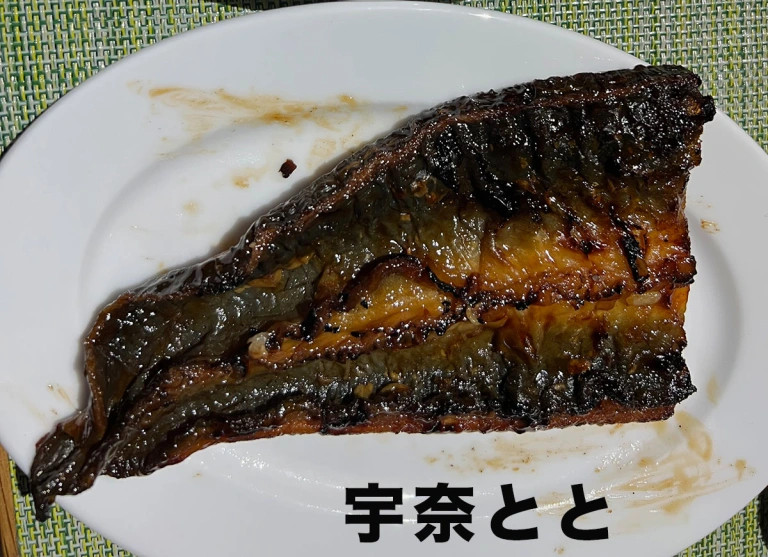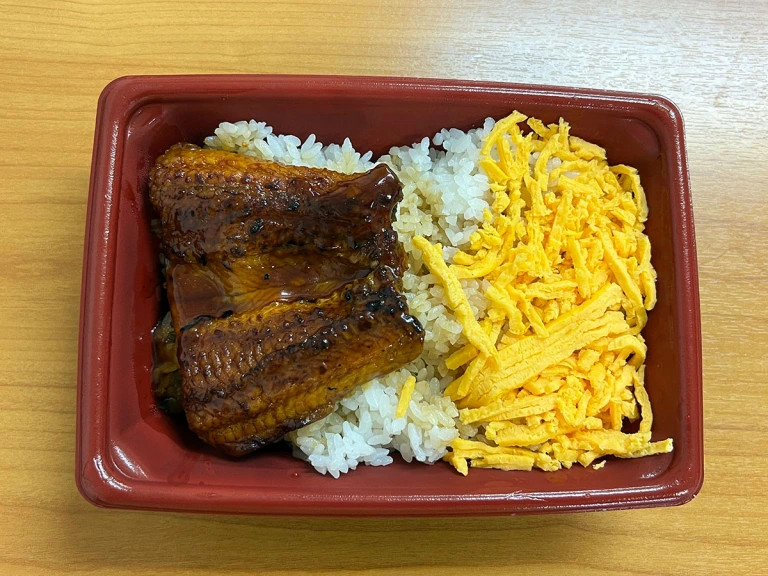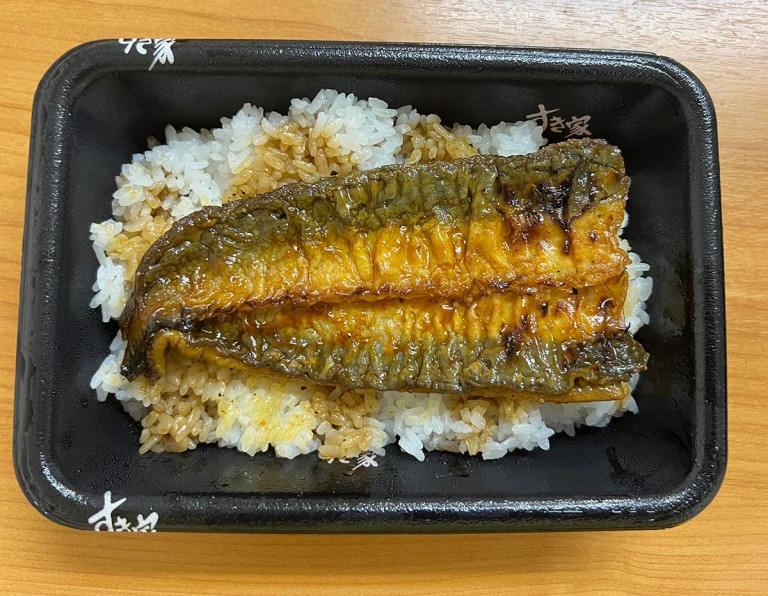
Unagi for about 1,000 yen…is it worth it?
Unagi is the Japanese word for freshwater eel, a luxury health food that many people consider worth splurging on from time to time. Often served over a bowl of rice, it’s far more expensive than your average beef or katsu bowl, and thus if you want seriously quality unagi, you have to be prepared to pay for it.
Of course, you don’t have to spend big bucks to enjoy an unagi bowl. Popular Japanese chains often sell it for around 1,000 yen (US$7.40). The problem is, then you run the risk of getting unagi with the dreaded “buyobuyo” quality, the flabby bottom-level of unagi. You want your unagi to be firm, plush, and flavorful, not soggy and limp.
But they can’t all be bad, right? Our Japanese-language reporter and food investigator Yuichiro Wasai was curious to find out which Japanese restaurant chains’ unagi would pass the buyobuyo test, so he purchased five different takeout an unagi bowl to find out.
Unfortunately, though Yuichiro would very much like to buy an unagi bowl from every cheap place in town, he can only eat so much, so after much deliberation, he decided to test only these five. Please note that all prices are takeout prices.)
● Yoshinoya’s Unaju (Eel over rice in a lacquered box) Single Eel Bowl (1,077 yen)
● Nakau’s Unaju (880 yen)
● Sukiya’s Unadon (Eel over rice in a bowl) Regular Size Bento (850 yen)
● Gusto’s Unagi Bento (1,079 yen)
● Origin Bento’s Unaju with Unagi from China (1,069 yen)
Since Yuichiro had the prices for each of his bowls, he decided to weigh each one to see how much volume you get per price. The food weights aren’t exact, since he couldn’t remove the meals from their containers without ruining their presentation, but there there was still one restaurant that pulled well above the others in terms of weight.
Though each of the ungai bowls weighed over 330 grams (11.6 ounces), Yoshinoya’s came out to 406 grams (14.3 ounces), nearly fifty grams heavier than Nakau’s, which was the next-heaviest.
However, when it came to the actual mass of the unagi itself, Yoshinoya’s eel only came out to be seven grams more than Gusto’s and Origin’s, indicating that maybe the bulk of Yoshinoya’s extra weight is rice. Nevertheless, the volume of food per yen was such that it might be well worth the over 1,000 yen price…if it passes the buyobuyo test.
(Warning: some people might find the following images gross, especially if you don’t like eel. If you think you’re okay, continue on.)
Now for the real test. Yuichiro began to flip the unagi one by one to check how limp-looking their bottoms were.
▼ Sukiya
▼ Gusto
▼ Yoshinoya
▼ Nakau
▼ Origin Bento
They all looked…reasonably flabby. Or at least, they didn’t have the chargrilled look unagi is supposed to have. Not like unagi specialty chain Unatoto’s takeout unagi, pictured below.
Sad to say, they all looked like they were made with speed and process optimization in mind…which isn’t surprising given that they were all cheap unagi bowls from chain restaurants. Nevertheless, there were some that stood out flavor-wise, and some that stood out for their cost performance, so here is Yuichiro’s ranking of the five different unagi bowls.
5. Yoshinoya’s Unaju Single Eel Bowl (1,077 yen)
Unfortunately, having the most volume didn’t save this unagi bowl from being ranked as the most buyobuyo. It was a shame since the top of the fish looked like it had so much elasticity. There was just too big a gap between the appearance of the front and the back. However, it did have the advantage of having the biggest serving of eel, so if you’re looking for a filling meal, this might be your best bet.
4. Gusto’s Unagi Bento (1,079 yen)
In terms of flavor, this bento was unremarkable, but that isn’t necessarily a bad thing. Unagi that tastes “just fine” at this price is actually pretty great. It also didn’t have a significant amount of buyobuyo, at least not enough for Yuichiro to notice. However, the rice in this bento was a little bit on the dry side, which is what bumped it down to fourth place.
3. Nakau’s Unaju (880 yen)
This was the only one that came with thin omelet strips, so it was the most colorful to look at. But Yuichiro thought if they were going to the trouble and expense of adding anything, he would much rather have more sauce than omelet strips. The unagi, however, was nice and soft, though Yuichiro ranked it fourth in terms of buyobuyo-ness.
2. Sukiya’s Unadon Regular Size Bento (850 yen)
This one was the least buyobuyo, and the unagi had a nice elasticity to it. However, it was still the opposite of fluffy. Yuichiro wasn’t quite sure how to describe it. Perhaps it was very…austere?
1. Origin Bento’s Unaju with Unagi from China (1,069 yen)
Although this one was a bit more buyobuyo compared to Sukiya’s unagi, it definitely had a much softer and fluffier texture. More than anything else, the flesh of the unagi was nice and thick. But the best thing of all was how they provided the sauce in a separate package.
Since the sauce will often end up being the lifeline of cheap unagi like this, Yuichiro believes that applying the sauce just when you’re ready to eat it is best, which is why this bento got top marks for thoughtfulness. Origin’s unagi bento also won because it came with pickles–and who doesn’t love pickles?–and was very transparent about its sourcing.
Regardless of which restaurant each unagi bento came from, however, Yuichiro had to say that he really appreciated all the effort they’ve gone through to provide a decent experience of unagi at a reasonable price. After tasting these, Yuichiro learned that there’s no reason to be too much of a snob when it comes to cheap unagi. At the very least, trying them all might make one appreciate expensive unagi even more. Or, if you’re like Yuichiro, you’ll always be searching for that extra delicious yet affordable unagi bento.
By the way, if you’re a fan of saltwater eel as well as freshwater eel, don’t forget to check out our investigation into which conveyer belt sushi chain has the best anago sushi!
Images © SoraNews24
● Want to hear about SoraNews24’s latest articles as soon as they’re published? Follow us on Facebook and Twitter!
[ Read in Japanese ]





















 Eel-topped takoyaki is delicious in any season, but here’s why now is the best time to try it
Eel-topped takoyaki is delicious in any season, but here’s why now is the best time to try it Nagoya’s dark-red miso has continued to capture tastebuds for generations
Nagoya’s dark-red miso has continued to capture tastebuds for generations Japan’s new imitation Oreos are here, but how do they compare to the made-in-China real deal?
Japan’s new imitation Oreos are here, but how do they compare to the made-in-China real deal? New Japanese menstrual product seeks to help women spot unidentified iron deficiencies
New Japanese menstrual product seeks to help women spot unidentified iron deficiencies Visit the mythical cave that hid the Sun Goddess in Japanese mythology
Visit the mythical cave that hid the Sun Goddess in Japanese mythology Japanese group to hold fashion show of colostomy bags and other stoma equipment in Paris
Japanese group to hold fashion show of colostomy bags and other stoma equipment in Paris We found possibly the quietest Japanese-style hotel in Tokyo’s bustling Shinjuku district
We found possibly the quietest Japanese-style hotel in Tokyo’s bustling Shinjuku district You can now buy a Japanese train station clock in Japan
You can now buy a Japanese train station clock in Japan An edible DIY Japanese rock garden is what we all need to stay sane while working from home【Pics】
An edible DIY Japanese rock garden is what we all need to stay sane while working from home【Pics】 Princesses, fruits, and blacksmiths: Study reveals the 30 most unusual family names in Japan
Princesses, fruits, and blacksmiths: Study reveals the 30 most unusual family names in Japan Fukuoka’s Inaba Udon chain comes to Harajuku and we slurp up every last drop of it
Fukuoka’s Inaba Udon chain comes to Harajuku and we slurp up every last drop of it Disillusionment at Tsukiji’s tourist-target prices led us to a great ramen restaurant in Tokyo
Disillusionment at Tsukiji’s tourist-target prices led us to a great ramen restaurant in Tokyo Japan may add Japanese language proficiency, lifestyle classes to permanent foreign resident requirements
Japan may add Japanese language proficiency, lifestyle classes to permanent foreign resident requirements Lacquerware supplier to emperor of Japan and Pokémon team up for new tableware
Lacquerware supplier to emperor of Japan and Pokémon team up for new tableware Starbucks Japan releases new zodiac chilled cup drink for 2026
Starbucks Japan releases new zodiac chilled cup drink for 2026 7-Eleven Japan’s ramen-cooking robot whipped us up a bowl of noodles【Taste test】
7-Eleven Japan’s ramen-cooking robot whipped us up a bowl of noodles【Taste test】 Cyberpunk anime meets traditional culture in Ghost in the Shell gold leaf Japanese changing screens
Cyberpunk anime meets traditional culture in Ghost in the Shell gold leaf Japanese changing screens 7 great places to see Mt. Fuji from without having to climb it
7 great places to see Mt. Fuji from without having to climb it Hello Kitty Choco Egg figures are an adorable trip through three periods of Japanese pop culture【Pics】
Hello Kitty Choco Egg figures are an adorable trip through three periods of Japanese pop culture【Pics】 Japan’s otoshidama tradition of giving kids money at New Year’s gets a social welfare upgrade
Japan’s otoshidama tradition of giving kids money at New Year’s gets a social welfare upgrade Starbucks Japan ready to get Year of the Horse started with adorable drinkware and plushies【Pics】
Starbucks Japan ready to get Year of the Horse started with adorable drinkware and plushies【Pics】 Japan’s human washing machines will go on sale to general public, demos to be held in Tokyo
Japan’s human washing machines will go on sale to general public, demos to be held in Tokyo 7-Eleven Japan starts new temporary luggage storage service in over 300 branches
7-Eleven Japan starts new temporary luggage storage service in over 300 branches Starbucks teams up with 166-year-old Kyoto doll maker for Year of the Horse decorations【Photos】
Starbucks teams up with 166-year-old Kyoto doll maker for Year of the Horse decorations【Photos】 Tokyo considering law requiring more trash cans following litter increase in heavily touristed area
Tokyo considering law requiring more trash cans following litter increase in heavily touristed area Tokyo’s Tsukiji sushi neighborhood asks tour groups to stay away for the rest of the month
Tokyo’s Tsukiji sushi neighborhood asks tour groups to stay away for the rest of the month Nintendo’s Kirby now delivering orders at Kura Sushi restaurants, but not in Japan
Nintendo’s Kirby now delivering orders at Kura Sushi restaurants, but not in Japan Tokyo event lets you travel back in time, for free, to celebrate 100 years since Showa era start
Tokyo event lets you travel back in time, for free, to celebrate 100 years since Showa era start Sanrio theme park in Japan announces plans to expand into a Sanrio resort
Sanrio theme park in Japan announces plans to expand into a Sanrio resort Stamina-destroying “Paralysis Noodles” are Tokyo’s newest over-the-top ramen innovation
Stamina-destroying “Paralysis Noodles” are Tokyo’s newest over-the-top ramen innovation Survey asks foreign tourists what bothered them in Japan, more than half gave same answer
Survey asks foreign tourists what bothered them in Japan, more than half gave same answer Japan’s deadliest food claims more victims, but why do people keep eating it for New Year’s?
Japan’s deadliest food claims more victims, but why do people keep eating it for New Year’s? We deeply regret going into this tunnel on our walk in the mountains of Japan
We deeply regret going into this tunnel on our walk in the mountains of Japan Studio Ghibli releases Kodama forest spirits from Princess Mononoke to light up your home
Studio Ghibli releases Kodama forest spirits from Princess Mononoke to light up your home Major Japanese hotel chain says reservations via overseas booking sites may not be valid
Major Japanese hotel chain says reservations via overseas booking sites may not be valid Put sesame oil in your coffee? Japanese maker says it’s the best way to start your day【Taste test】
Put sesame oil in your coffee? Japanese maker says it’s the best way to start your day【Taste test】 No more using real katana for tourism activities, Japan’s National Police Agency says
No more using real katana for tourism activities, Japan’s National Police Agency says The top 10 annoying foreign tourist behaviors on trains, as chosen by Japanese people【Survey】
The top 10 annoying foreign tourist behaviors on trains, as chosen by Japanese people【Survey】 Starbucks Japan reveals new sakura drinkware collection, inspired by evening cherry blossoms
Starbucks Japan reveals new sakura drinkware collection, inspired by evening cherry blossoms
Leave a Reply